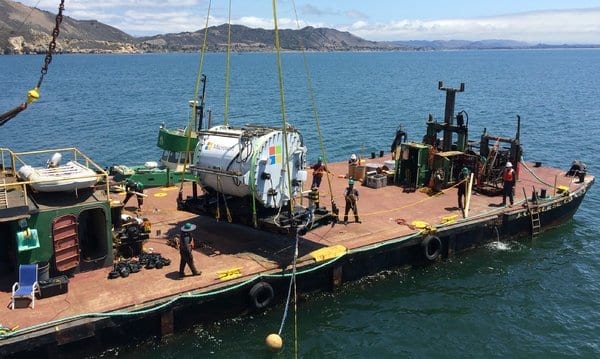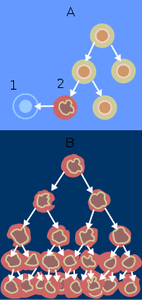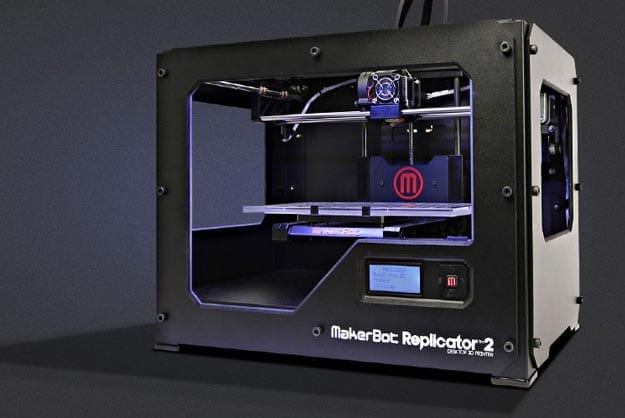
The data center of the future might do more than crunch and store information.
In addition to serving web pages, streaming Netflix videos, and hosting social networks, data centers might produce their own power.
Data centers consume a lot of energy. In the United States, data centers used 76 GWh of electricity in 2010 (or roughly 2 percent of the country’s energy usage, according to a report in the New York Times. Therefore, companies are looking for ways to reduce energy usage and pollution while maintaining reliability.
A team of researchers at Microsoft is studying how they could bring the power plant into the data center itself to improve efficiency and reliability using fuel cell technology.
“We are taking an unconventional approach to power a datacenter entirely by fuel cells integrated directly into the server racks. This brings the power plant inside the datacenter, effectively eliminating energy loss that otherwise occurs in the energy supply chain and doubling the efficiency of traditional data centers”, writes Sean James, Senior Research Program Manager for Microsoft’s Global Foundation Services (the group that manages the company’s data centers).
Data centers typically source electricity from utilities (or in some cases provided by onsite renewable generation). If electricity is purchased from the grid, it is likely produced using some form of combustion. First, fuel is combusted to spin a turbine (either directly in a gas cycle or using steam). The turbine blade then spins a generator to produce electricity, which is then transmitted and distributed along wires until it gets to the data center.
The laws of thermodynamics tell us to expect losses at each of the stages, so much so that only 20 percent of the energy produced at the power plant makes it to the server rack. Losses occur every time energy changes form (say, going from chemical energy in the fuel to thermal energy in steam, to mechanical energy of a spinning turbine blade, and so forth).
By eliminating the number of energy conversions, James and his team have found they can double the efficiency to 40 percent.
Go deeper with Bing News on:
Datacenter power
- Abandoned mine could store data center waste heat for use in German energy grid
Waste heat from a data center in Bochum, Germany, could be stored in an abandoned mine and used in a district heating system.
- Dominion planning to power 15 more data centers in 2024
Dominion Energy expects to service 15 more data centers through the end of 2024 as the utility receives bigger power requests from computer warehouse developers, executives said on Thursday.
- 7-building data center campus proposed in metro Atlanta
Imagine an expanse of two-story buildings filled to the brim with computer servers that sprawls over an area about half the size of Atlantic Station.
- Moves by Vertiv and Schneider Electric Typify Data Centers' AI Power and Cooling Lift for NVIDIA GPUs
Recent power moves by market leaders Vertiv and Schneider Electric in the direction of NVIDIA and AI typify a larger trend conspicuously rippling through the data center ...
- AMD datacenter sales surge 80% in Q1 despite market's lukewarm reception
Chip giant forecasts strong GPU growth amid mixed financial results AMD's datacenter revenue grew 80 percent and it hopes to make at least $4 billion from its GPUs this year, but shares took a hit as ...
Go deeper with Google Headlines on:
Datacenter power
[google_news title=”” keyword=”Datacenter power” num_posts=”5″ blurb_length=”0″ show_thumb=”left”]
Go deeper with Bing News on:
Powering datacenters
- PSEG to explore selling nuclear power to data centers
PSEG recently notified the U.S. Nuclear Regulatory Commission (NRC) of its intent to renew the licenses for Salem Generating Station Units 1 and 2 and the Hope Creek Generating Station. PSEG owns 57% ...
- Record-breaking $10B clean energy deal to help Microsoft power AI at data centers
Microsoft has signed a record-breaking deal to invest over $10 billion in renewable energy capacity to power AI technology at data centers.
- Data Centers Now Need a Reactor’s Worth of Power, Dominion Says
Data center developers in Northern Virginia are asking utility Dominion Energy Inc. for as much power as several nuclear reactors can generate, in the latest sign of how artificial intelligence is ...
- States rethink data centers as ‘electricity hogs’ strain the grid
Norm Needleman championed the 2021 legislation designed to lure major data centers to Connecticut. The Democratic lawmaker hoped to better compete with nearby states, bring in a growing industry, and ...
- UPDATE 2-Dominion planning to power 15 more data centers in 2024
(Adds data center details and executive quotes in paragraphs 3, 4, 7, 8 and 9. Dominion Energy expects to service 15 more data centers through the end of 2024 as the utility receives bigger power ...
Go deeper with Google Headlines on:
Powering datacenters
[google_news title=”” keyword=”powering datacenters” num_posts=”5″ blurb_length=”0″ show_thumb=”left”]










